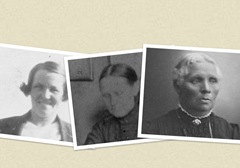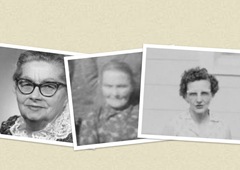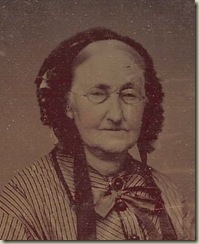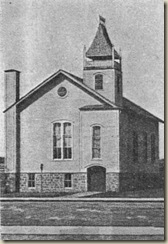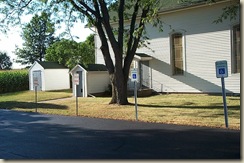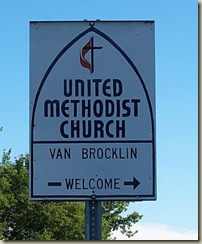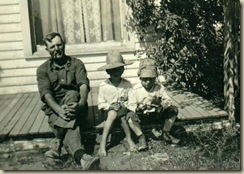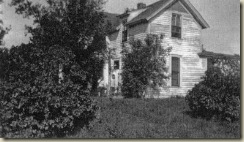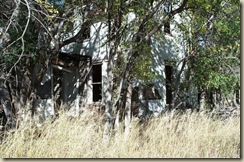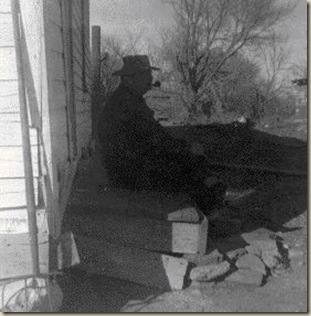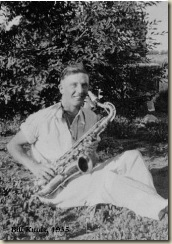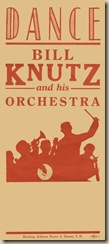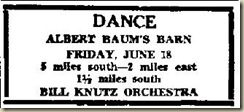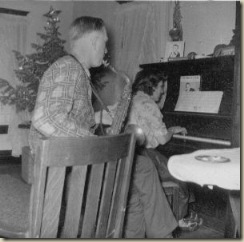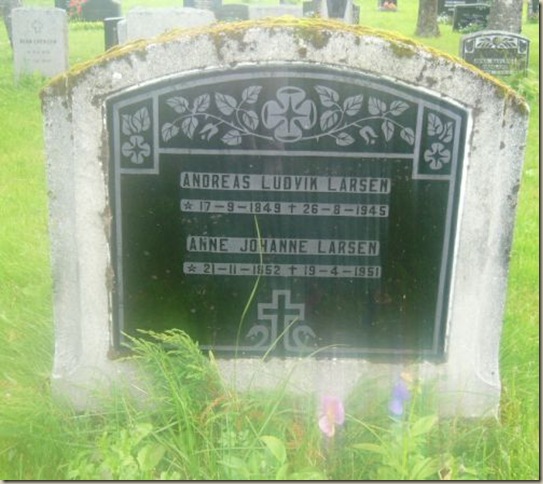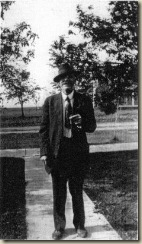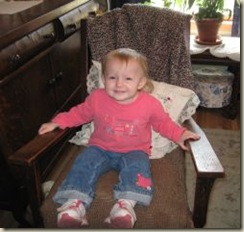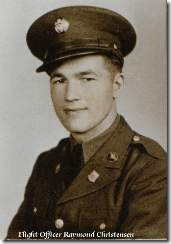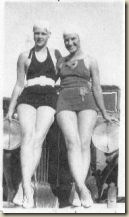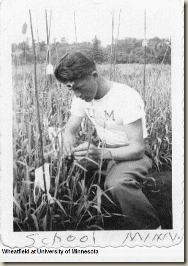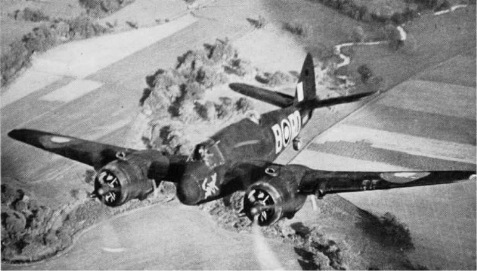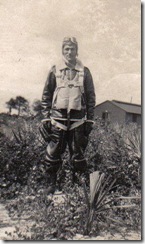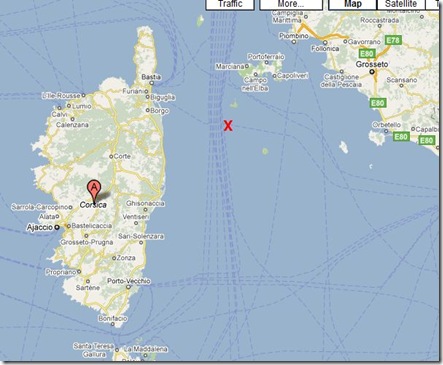Any mother sending her son off to war has to do so with such mixed feelings - pride, tempered with fear; faith, battered by the reality of death. So often I have tried to imagine what my great great grandmother, Nettie Graves, must have felt as she watched her only son, Delbert, leave for Camp Dodge, Iowa, on a warm Thursday in June of 1918.
Delbert, being the only boy in the family, had spent a lot of time with his father, helping him with the farm work, and together, they constructed numerous buildings on the flat plains of eastern South Dakota. Delbert worked for a dray business, and raised hounds, and often helped his brother-in-law, Will Knutz, on his farm.
Delbert's absence from his family was no doubt immediately felt. His father, Tom, mostly did carpentry work after Delbert left, probably finding the farm to be a burden to handle alone. Delbert's younger sister Lulu, often pictured with him, must have had a difficult time adjusting to his absence. And then there was his mother, Nettie. I know how I would have felt, and not sure there are words to adequately express it.

Delbert's first stop was Camp Dodge, Iowa, pictured at left. He often sent his little sister postcards, one, sent in August, just prior to him being relocated overseas, read, "Hello, Lulu, Have had a couple of easy Days work lately. Good Bye, Best Wishes, D.D.G." Delbert was a member of Company H of the 351st Infantry, commonly called the "Doughboys." From Camp Dodge, he was sent to Fort Des Moines, and then to England at the end of August, and shortly afterward, to France.

Influenza was rampant, and struck the military in France especially hard. After being in France a mere two weeks, nearly the whole Company came down the the flu. Makeshift hospitals, such as those pictured here, were quickly constructed to deal with the incredible numbers of sick soldiers. Delbert's friend, J. W. Hofer, who had gone through Camp Dodge with Delbert and was assigned to the same Company, told of being sick himself, but not so severely as Delbert; he made sure Delbert was covered up, and brought him food, as often as he was able. Still incredibly weak from his illness, Delbert was not able to go with his Company when they moved on. On December 5, his condition worsened, and he was admitted to Base Hospital No. 18, with a diagnosis of Scarlet Fever.

Delbert died December 12, 1918. His family was notified shortly thereafter. His body was laid to rest in the American Cemetery at Bazoilles-sur-Meuse, Vosges, France. However, reports kept surfacing from some of the other men who had known him, that they had seen him after this time, leaving the family with an incredible amount of anxiety, but hope as well. More military investigations took place, and his death was definitely confirmed in April of 1919, some four agonizing months later. I cannot imagine how many sleepless nights his family endured during this time, not knowing the fate of their son for so long. They began making arrangements to have his body returned home, and laid to rest in their little town of Carthage, South Dakota, in Pleasant View cemetery, just outside of town.

In June of 1920, Delbert finally came home. A brief service was held at the family home - not exactly the homecoming they must have dreamed about for their beloved son and brother. A public funeral was held at the cemetery, with The Delbert Graves Post of the American Legion in charge of the services, with full military honors. A tremendous number of area people came to pay their respects and comfort the family, as can be seen from the photo above.
We should always remember our soldiers, each and every day. Each one of them, and their families, have sacrificed *something* to do the work that needs to be done. Some of these people have sacrificed EVERYTHING. I know how Delbert's death and absence from the family affected the remainder of his mother's life. Tucked inside one Delbert's books from his childhood, Nettie had placed a small piece of paper that she wrote some 10 years after his death -
"If you only could come home,
Friends may think we have forgotten,
when at times they see us smile,
but they little know the heart aches
that our smiles hide all the while,
Sweet and peaceful be thy rest
Forget you, we can never;
God called thee, he knows best
His will be done forever."
God bless you, Delbert, and thank you for your sacrifice.




